The Recreational Craft Directive 94/25/EC (RCD) of the European Parliament and of the Council went into effect 16 June 1996.
All recreational water craft marketed in the European Union, from 2,50 to 24,00 meters in Length, both power and sail, had to comply with the essential requirements of the Recreational Craft Directive before June 16,1998.
Besides craft, the Directive also specifies five categories of components that must also meet the requirements:
- Ignition protected equipment for inboard and stern drive engines
- Start-in-gear protection devices for outboard engines
- Steering wheels, steering mechanism and cable assemblies
- Fixed fuel tanks and fuel hoses
- Prefabricated hatches and portlights
These components must be certified before the boat manufacturer can make application for boat certification.
With the amendment of the Directive 2003/44/EC from June 16, 2003 on, the scope has been extended to cover also:
- Personal Watercrafts
- Exhaust emission of recreational craft and personal watercraft
- Noise emission of recreational craft and personal watercraft
The component or accessory suppliers play an integral part in supporting boat building and they must obtain CE certification. However, the boat manufacturer is ultimately responsible for compliance with the Directive and obtaining the CE-mark.
Certification Procedure:
1. New Vessels & Components.
Boat manufacturers must notify their suppliers for those components that have to be certified to the Directive. The component manufactures make application to IMCI for certification, and when they receive their certificate number for their component, they pass this information to the boat manufacturer customers along with a copy of the certificate.
The boat manufacturer then includes that component number on the boat application which is confirmed during IMCI inspections and application verifications.
Once completed, the forms are submitted to IMCI for verification. Vessels certified under any module other than ‘Aa’ will be required to be inspected by an IMCI inspector. When satisfied that the boat is in compliance with the Directive, IMCI will issue a Certificate for the boat model or model family.
At this point the boat manufacturer may apply the CE-mark to the boat on the Builder’s Plate and issue a Declaration of Conformity.
Certification Procedure:
2. Post-Construction Assessments
Vessels already in service and not CE-marked at the time of the construction can still be certified as ‘one-offs’ under Module ‘G’. As examples, the following boats are covered by Post-Construction Assessment:
- Boats that were not constructed, placed on the market or put into service in the present European Comunity prior to the full application date of the Directive
- Boats built for own use when placed on the market within the first five years of completion
- Boats intended solely for racing or experimental craft, subsequently placed on the market as recreational craft and therefore required to be CE-marked in accordance with the Directive.
- Totally refitted boats (e.g. conversions of former commercial boats, etc)
All vessels seeking certification under module ‘G’ will have to comply with all aspects of the RCD as per a newly build vessel. This includes design, construction, noise and exhaust emissions.
When the inspector is satisfied that the boat is in compliance with the Directive, IMCI will issue a Certificate for that boat and the owner may apply the CE-mark.
Who is IMCI?
The International Marine Certification Institute (IMCI) was established in Brussels, Belgium, as an independent certification organisation to serve the interests of the European and International recreational boating industry.
With the establishment of the European Communities Directive for Recreational Craft (94/25/EC) IMCI is able to provide a valuable certification service to manufacturers who desire to market their boats, yachts, and certain components in the European market.
IMCI was founded in 1992. MCI policy comes from a board of 28 Directors from 16 countries. IMCI’s certification authority was recognized in 1996 by the European Commission’s assignment of Notified Body 0609 as the identification number for IMCI. That means products covered by the Recreational Craft Directive, when certified by IMCI, will be able to display the mark on their products which will allow free and open access to all countries of the European Union market.
IMCI’s effective and low cost certification replaces the expensive and often cumbersome individual country homologation processes.
Why choosing IMCI?
Because IMCI is the largest and only Notified Body purposely set up to provide Certifications to the Recreational Craft industry worldwide.
As of the end of September 2006, IMCI issued over 12,000 CE-Certificates in 51 different countries around the globe, covering 5,710 boat models from 921 manufacturers, 6,717 components and engines from 501 manufacturers.
The expertise achieved by IMCI inspectors and the organization as a whole in this specific field of certification is second to none. The EU provides procedures to transparency of Notified Bodies like IMCI. The consumer and industry representatives on the IMCI Board have assured certification fees to be as low as possible according to the IMCI charter as a non-for-profit organization. If IMCI achieves some profit then this is given back to the boating industry as a donation.


